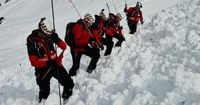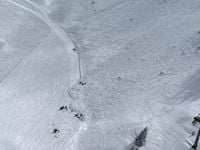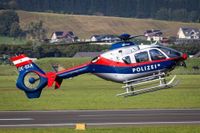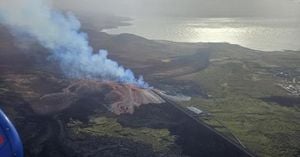On Sunday, March 30, 2025, a dramatic scene unfolded in Kitzbühel, Austria, as several avalanches cascaded down the Steinbergkogel mountain, creating a substantial emergency response. The avalanches occurred around 12:25 PM on the northeast side of the mountain, at an altitude of approximately 1,850 meters, and reached sizes of up to 160 x 160 meters. One of the avalanches slid approximately five meters onto the black slope No. 23, known as Griesalm, partially covering it over a width of about 50 meters.
As the avalanches struck, panic ensued, particularly since it was initially unclear if any skiers or snowboarders were caught in the dangerous area. A quick-thinking skier who witnessed the event immediately raised the alarm, prompting a large-scale search operation. The urgency of the situation was palpable as rescue teams mobilized swiftly.
Responding to the emergency were 27 mountain rescuers from the Kitzbühel and Kirchberg teams, alongside three avalanche rescue dogs and their handlers. Additionally, two alpine police officers and five employees from the Kitzbühel cable car were dispatched to the scene. The operation was further bolstered by air support from two emergency helicopters and a police helicopter, which surveyed the avalanche cones from above.
Florian Obermoser, the incident commander from the Kitzbühel mountain rescue team, described the tense atmosphere: "At the time of the alarm, it was unclear whether anyone had been buried. We had to search multiple areas, which was a significant effort." The rescue teams utilized avalanche transceivers (LVS), probing chains, and RECCO devices in their search efforts, while helicopters scoured the area for any signs of buried individuals.
Despite the extensive search, which lasted several hours, no evidence of buried persons was found. Eyewitness accounts also confirmed that no one had been trapped under the snow. As a result, the search was officially called off around 4:30 PM.
The avalanches were significant not only for their size but also for the potential danger they posed to winter sports enthusiasts. The authorities noted that the recent weather conditions, including fresh snowfall, wind-drifted snow, and fluctuating temperatures, had heightened the avalanche risk in the region. Officials have since urged extreme caution in open terrain, emphasizing the need for skiers and snowboarders to remain vigilant.
This incident serves as a stark reminder of the power of nature and the importance of safety measures in mountainous areas. The swift action of the rescue teams and the cooperation among various agencies ensured that the situation did not escalate into tragedy. As the ski season continues, both locals and visitors are reminded to heed warnings and stay informed about avalanche risks.
In conclusion, the events at Steinbergkogel on March 30 highlight the critical role of preparedness and rapid response in mitigating the dangers posed by avalanches in ski regions. While no one was harmed in this incident, the potential for danger remains, and the community's safety depends on awareness and respect for the mountain environment.






